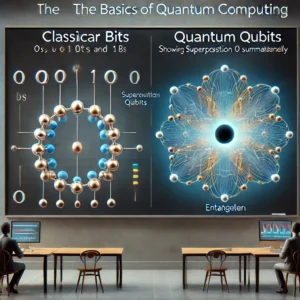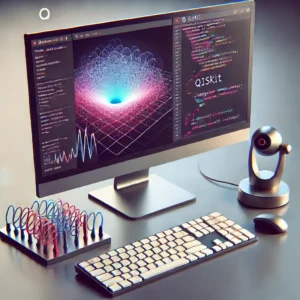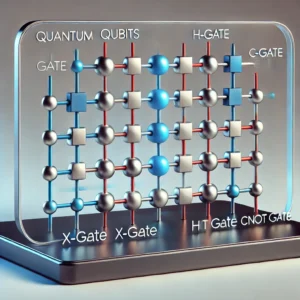Mastering Quantum Computing Basics: A Hands-On Guide for Beginners

Quantum computing represents a radical shift from traditional computing, leveraging quantum mechanics to process data in ways that were previously unimaginable. Unlike classical computers, which process bits as 0s and 1s, quantum computers utilize qubits, capable of representing both states simultaneously. This capability enables quantum computers to solve certain types of problems exponentially faster than classical computers.
Mastering Quantum Computing Basics
Although commercial quantum computers are still in development, there are ways to simulate and explore quantum computing principles on personal computers. This guide provides an introduction to quantum computing basics, including essential concepts, practical frameworks, and resources for getting started on a PC.
Understanding Quantum Computing Fundamentals
Quantum computing requires a basic understanding of quantum mechanics, the branch of physics that describes subatomic particles. This section covers essential concepts that form the foundation of quantum computing.
1. The Difference Between Classical and Quantum Computing
- Classical Computing: In classical computers, data is represented by bits that hold either a 0 or 1 state. Computations follow binary logic, relying on sequential processing.
- Quantum Computing: Quantum computers use quantum bits, or qubits, which can exist in a state of 0, 1, or both simultaneously (a property called superposition). This allows quantum computers to perform complex calculations faster and in parallel.
2. Key Quantum Principles
- Superposition: Superposition allows qubits to be in multiple states at once, enabling simultaneous computation paths.
- Entanglement: Entanglement is a unique property where two qubits become interconnected, meaning the state of one qubit directly affects the state of another, regardless of distance.
- Quantum Interference: Quantum interference is used to control probabilities in quantum algorithms, amplifying desired outcomes and minimizing others.
3. What Are Qubits?
- Qubits are the fundamental units of quantum computing. Unlike bits, which can only be in one state at a time, qubits can exist in multiple states simultaneously. This property, combined with entanglement, provides quantum computers with their incredible processing power.
Quantum Computing Hardware and Software for PCs
Quantum computers require specialized hardware to operate; however, PC users can access quantum computing through simulators and cloud-based quantum processors. This section explores hardware limitations, software tools, and frameworks available for PCs.
1. Quantum Computing Simulators
- Quantum Simulators on PCs: Due to the complexity of building a physical quantum computer, simulators allow PC users to experiment with quantum algorithms. Simulators mimic quantum mechanics on classical hardware, providing a way to learn and test quantum concepts without a physical quantum computer.
- Limitations: Simulations are slower and less efficient than actual quantum processors. They’re typically limited to a small number of qubits due to hardware constraints on personal computers.
2. Essential Software and Frameworks for Quantum Computing on PCs
- Qiskit: An open-source quantum computing framework developed by IBM. Qiskit provides tools to create and simulate quantum circuits and access IBM’s quantum processors.
- Microsoft Quantum Development Kit (QDK): Microsoft’s QDK includes Q#, a programming language for quantum development. It supports simulations and integrates with Azure Quantum, allowing users to experiment with quantum algorithms.
- Quantum Inspire: Developed by QuTech, Quantum Inspire offers quantum computing simulations and can be accessed via a web-based platform or API. It’s designed for beginners and provides a user-friendly interface.
- D-Wave Ocean SDK: The Ocean SDK allows access to D-Wave’s quantum annealing hardware. Although focused on optimization problems, it provides a different approach to quantum computing that’s suitable for learning.
3. Setting Up a Quantum Computing Environment on Your PC
- Installing Qiskit: Qiskit can be installed on a PC via Python’s package manager pip. This involves installing Anaconda (a Python distribution) and executing
pip install qiskitin the command line. - Using Jupyter Notebooks: Jupyter notebooks are ideal for quantum computing experiments. After installing Qiskit, users can run Jupyter notebooks to write and test quantum code interactively.
Building and Running Quantum Circuits
Quantum circuits are sequences of quantum operations or gates applied to qubits to solve computational problems. This section provides a beginner’s guide to creating and running quantum circuits on simulators.
1. Understanding Quantum Gates
- X-Gate: The X-gate, or NOT gate, flips the state of a qubit from 0 to 1 or vice versa.
- H-Gate (Hadamard Gate): The H-gate puts a qubit into superposition, allowing it to represent both 0 and 1 simultaneously.
- CNOT Gate: The Controlled NOT (CNOT) gate is used with two qubits to create entanglement, a crucial part of quantum computing.
2. Creating a Simple Quantum Circuit with Qiskit
- Defining the Circuit: Quantum circuits are defined by specifying the number of qubits and adding gates to manipulate their states. In Qiskit, a simple circuit with one qubit can be created with the following code:
- Simulating the Circuit: After defining the circuit, users can run it on a simulator to observe the results. Qiskit provides simulators through its Aer module:
3. Interpreting Results from Quantum Simulations
- Probability Distributions: Quantum measurements provide probabilistic results. The output represents the probability of each outcome, reflecting the unique nature of quantum computation.
- Visualization: Qiskit allows results visualization with histograms, which display the likelihood of each possible state after measurement.
Introduction to Quantum Algorithms
Quantum algorithms leverage quantum principles to solve problems faster than classical algorithms. This section introduces key quantum algorithms and their applications.
1. The Role of Quantum Algorithms
- Quantum algorithms use superposition, entanglement, and interference to reduce computation time for specific tasks, including factoring, searching, and optimization.
2. Key Quantum Algorithms
- Grover’s Algorithm: Grover’s algorithm provides a quadratic speedup for unstructured search problems. It enables finding a target item in an unsorted database faster than classical search algorithms.
- Shor’s Algorithm: Shor’s algorithm is used for factoring large numbers, a breakthrough with significant implications for cryptography. While it requires a large quantum computer to run effectively, its principles can be explored in simulation.
- Quantum Fourier Transform (QFT): QFT is used in several quantum algorithms for solving problems like period finding. It’s a quantum analog to the Fast Fourier Transform (FFT) and is fundamental to many quantum applications.
3. Running Grover’s Algorithm on a Quantum Simulator
- Grover’s algorithm can be implemented in Qiskit to demonstrate quantum search capabilities. Users can define a problem, apply Grover’s algorithm, and observe the results in a simulated environment.
Practical Applications and Future of Quantum Computing
Quantum computing has the potential to revolutionize various fields, from cryptography to drug discovery. This section explores current and future applications of quantum computing and its impact on society.
1. Applications of Quantum Computing
- Cryptography: Quantum computing can break traditional encryption algorithms, but it also offers new forms of quantum-safe encryption.
- Drug Discovery: Quantum computing can simulate molecular structures and interactions, speeding up drug discovery and reducing costs.
- Optimization Problems: Quantum computers can solve complex optimization problems in logistics, finance, and artificial intelligence.
2. The Future of Quantum Computing for PC Users
- While fully functional quantum computers are still being developed, PC users can continue exploring quantum concepts through simulators. As technology advances, users may gain access to hybrid quantum-classical systems, integrating quantum computing with traditional systems for powerful computational capabilities.
Frequently Asked Questions (FAQ)
- Can quantum computing be done on a regular PC?
Quantum computing on a regular PC is done through simulations, as physical quantum computers require specialized hardware. However, simulators like Qiskit provide a way to experiment with quantum concepts on PCs. - What programming languages are used in quantum computing?
Common languages include Qiskit (Python-based), Q# (Microsoft), and Cirq (Google’s framework). Python is widely used due to its compatibility with quantum libraries. - How many qubits can be simulated on a PC?
The number of qubits that can be simulated depends on the PC’s hardware. Typically, PCs can handle simulations of up to 20 qubits before memory limitations become an issue. - Is quantum computing useful for gaming?
Quantum computing is not currently applicable to gaming as it’s designed for specific types of calculations. Traditional CPUs and GPUs remain more suitable for gaming tasks. - Where can I learn more about quantum computing?
IBM’s Qiskit platform, Microsoft’s Quantum Development Kit, and online courses like those on Coursera offer excellent resources for learning quantum computing.
Additional Resources for Quantum Computing on PCs
- IBM Quantum Experience
IBM provides access to real quantum computers via the cloud, allowing users to run quantum circuits and learn hands-on. Visit IBM Quantum for more. - Qiskit Textbook
IBM’s Qiskit textbook offers a comprehensive introduction to quantum computing and programming with Qiskit. Available at Qiskit.org. - Microsoft Quantum Development Kit Documentation
Microsoft’s QDK includes tutorials and documentation for learning Q#, available at docs.microsoft.com. - Quantum Inspire
Quantum Inspire offers a platform for running quantum algorithms and provides resources for beginners. Check it out at Quantum Inspire. - Coursera’s Quantum Computing Courses
Coursera offers quantum computing courses from institutions like the University of Toronto and UC Berkeley, covering both theory and practical applications.
Quantum computing on a PC opens the door to a fascinating new field that could revolutionize technology. By understanding core principles like superposition and entanglement, setting up a quantum environment, and experimenting with quantum circuits, beginners can gain hands-on experience with quantum mechanics. While physical quantum computers are still developing, simulators allow users to dive into this emerging technology and explore its potential applications.
This guide has provided a foundational understanding of quantum computing basics, tools, and resources for PC users. As quantum technology progresses, this knowledge will serve as a stepping stone for further exploration in quantum computing.








